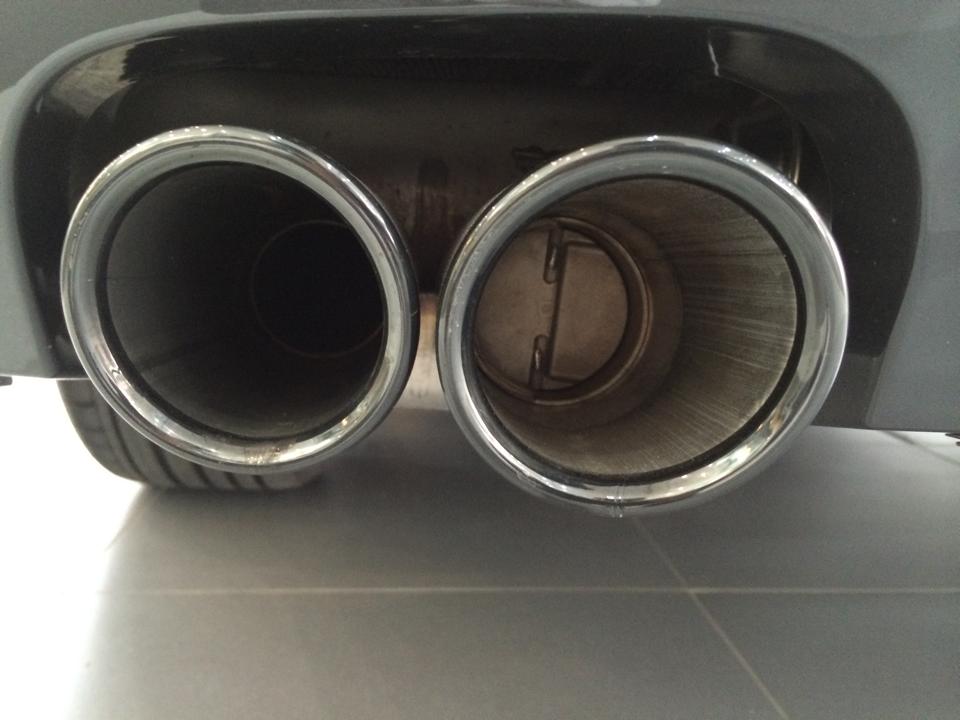If you've ever noticed that only one of your car's exhaust pipes gets dirty while the other stays relatively clean, you're observing a modern automotive phenomenon rooted in engineering and regulatory ingenuity. This is entirely normal and can be attributed to the valved exhaust system, an innovation driven by the need to balance performance, efficiency, and emissions.
Why Only One Exhaust Pipe Gets Dirty
Exhaust valves are electronically controlled flaps located inside one of the exhaust pipes. Their primary role is to manage the flow of exhaust gases for various reasons, including emissions control and noise regulation. Typically, the valve remains closed in Eco Pro and Comfort modes, leading to one exhaust tip accumulating more soot and grime than the other. When you switch to Sport or Sport+ mode, the valve opens, allowing exhaust gases to flow through both pipes, which explains why the tips appear differently maintained.
Here’s a breakdown of how the flap functions:
- Startup: The flap is closed to help warm up the catalytic converters faster.
- Idle: The flap opens when the car reaches idle to allow a steady flow of gases.
- Driving: In Comfort or Eco Pro modes, the flap stays closed unless you apply hard throttle, while it remains open in Sport and Sport+ modes for enhanced performance and sound.
The Unseen Costs of Compliance
While exhaust valves help cars meet stringent emissions standards and noise regulations, they come with trade-offs. These systems add complexity, weight, and cost to vehicles, impacting overall design and performance. The added components and electronics required to control these valves make cars heavier and more expensive to produce. Additionally, the need to comply with regulatory demands often leads to compromises in other areas, such as engine performance and driving dynamics.
This phenomenon can be described as a "nerfing" of car design, where the pure, unfiltered driving experience is diluted in the name of compliance. The raw, visceral feel of a naturally aspirated engine is often muted, and the added weight can detract from the agility and responsiveness that driving enthusiasts cherish.
Engineering Ingenuity: The Silver Lining
However, there’s another side to this story. The introduction of regulations and limitations doesn't just stifle innovation; it can also drive it to new heights. Take, for instance, the world of Formula 1. Despite a myriad of stringent regulations, F1 cars continue to set ever-faster lap times each season. The constraints push engineers to think outside the box, leading to groundbreaking advancements in aerodynamics, materials science, and powertrain efficiency.
As a specator I still yearn for those screaming V12s and will argue until the sun comes down about how F1 does not need restrictions in that department. Yes of course some of this innovation does trickle down to our regular road cars, fair enough, but I would be happy to see that innovation come from a dedicated engineering group rather than have that crammed into F1 for the sake of compliance.
Similarly, in the automotive industry, the need to meet emissions standards has spurred significant technological progress. Turbocharging, hybridization, and advanced engine management systems are direct responses to regulatory pressures. These technologies not only help cars comply with emissions laws but also unlock new levels of performance and efficiency.
Manufacturers are now developing engines that are smaller, lighter, and more powerful than their predecessors. Hybrid systems, which combine internal combustion engines with electric motors, provide bursts of acceleration while maintaining fuel efficiency. Even electric vehicles, which are becoming more prevalent, owe their rapid development to the push for cleaner transportation solutions.
The Balance of Passion and Progress
The world of automotive design is one of constant tension between regulation and innovation. Exhaust valves are another product of this tension.
As enthusiasts, we might lament the loss of raw, unfiltered driving experiences (they can have my MX5 NB when they pry it out of my cold, dead hands) but there is certainly an argument to be made that having no regulations, rules or restrictions results in less innovation and some really silly ideas. Personally I think we need to balance it both ways because on the path we are now, we end up with a cross-over 1.1L econobox that has zero off road capabilities, is full of plastic interiors and evokes about as much driving fun as a tricycle.


